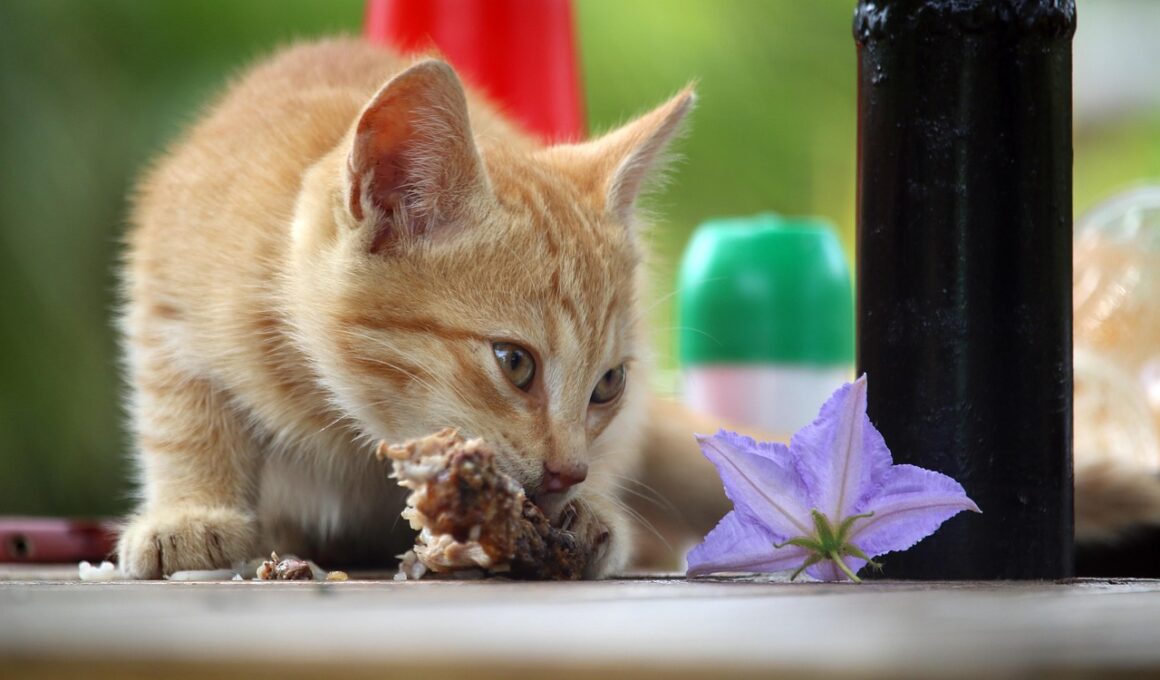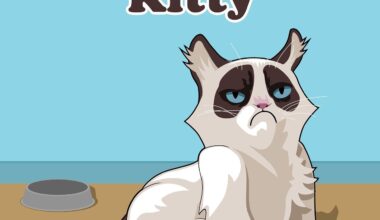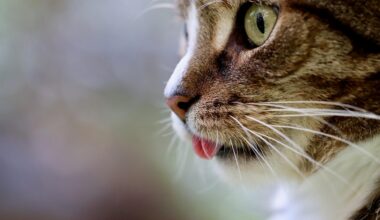Interactive Feeding Toys and Their Impact on Cat Behavior
Interactive feeding toys are gaining popularity in the realm of cat care. These toys serve dual purposes: they engage your cat in play while providing mental stimulation and making mealtime more interesting. Cats are natural hunters, and using feeding toys simulates this instinct. The toys require cats to figure out how to access their food, which satisfies their need to work for their meals. Furthermore, these toys often come in various designs, including puzzle-style feeders. Such diversity can keep cats engaged for longer periods, ultimately leading to fewer behavioral issues. By encouraging active play, feeding toys promote physical health as well. Instead of simply eating from a bowl, cats can engage with their food. By turning meals into a challenge, these toys can help reduce boredom and anxiety in house-bound cats. Additionally, interactive feeding toys can also help in managing your cat’s weight by controlling the amount of food they consume during play. With these advantages, investing in a quality feeding toy can significantly improve your cat’s well-being and enrich its everyday life.
Moreover, interactive feeding toys can help in training cats to develop positive feeding habits. When utilizing these toys, cats experience a reward-based system. This inherently reinforces good behavior as they learn to associate the toys with fun and satisfaction. Many pet owners have reported improvements in their cats’ behavioral responses when interactive feeders are introduced. For instance, cats may become less picky with food and more willing to try different types of kibble. Additionally, because the toys require focus and patience, they can contribute to enhancing a cat’s problem-solving skills. You may notice your cat becoming more engaged and curious during feeding times, which is a significant behavior shift. Positive interactions with feeding toys can strengthen your bond as well. Engaging in play while your cat uses the feeder makes it a joint activity, fostering companionship. For those concerned about the stress of mealtime, interactive feeders can also ease that tension. They can transform a mundane daily ritual into an exciting challenge, keeping both cats and owners happy. Overall, these toys promote healthier relationships between cats and food.
When introducing interactive feeding toys to your cat, it’s essential to take the right approach. Begin by observing your cat’s initial reactions to the toy. Each cat has a unique personality; some may embrace the new challenge, while others may be hesitant. You can start by offering your cat a toy that is simpler and designed for beginners. Once your cat gets the hang of it, progressively introduce more challenging toys. Being patient is key. It’s essential to avoid overwhelming your cat with complex toys too early on. Transitioning slowly helps build confidence and encourages exploration. It’s also important to select toys that are suitable for your cat’s size and skill level. Look for durable materials that are safe and non-toxic. Regularly cleaning the toys is necessary to ensure hygiene and maintain your cat’s interest. Keeping the feeder stimulating can involve rotating different toys. This change can keep your cat engaged and reduce the likelihood of boredom. Enjoy watching your feline friend thrive as they challenge their mind. The right interactive feeding toy can be a great asset in cat training.
The Benefits of Using Feeding Toys
The benefits of feeding toys extend beyond physical activity and mental stimulation. They can also support your cat’s emotional and psychological health. As cats play, they release endorphins that contribute to their happiness and well-being. The toy acts as a positive outlet for their energy. The process of playing and solving food-related challenges is rewarding, promoting a sense of achievement. This newfound confidence can spill into other areas of their lives, leading to more exploration and openness to novel experiences. Moreover, feeding toys can also help reduce aggressive behaviors in some cats. Because they channel energy into play, they may become less inclined toward destructive behaviors, such as scratching furniture. Moreover, it can assist in reducing competition among multiple cats in your home. Each cat can have its feeding toy, allowing them to enjoy their meals simultaneously without competition or stress. Owners frequently notice a drop in tension among their pets. Utilizing these tools positively impacts multiple aspects of your cat’s life, therefore, it’s a worthwhile consideration in any cat owner’s toolkit.
Consideration must also be given to the variety of feeding toys available on the market. Different toys cater to different needs, making it necessary to choose wisely based on your cat’s preferences and behavior. Some toys dispense food gradually, while others require more intricate maneuvers. There are also toys that combine elements of chase and play with feeding processes. Take your cat’s personality into account when selecting a feeding toy. If your cat is more active, choose ones that stimulate movement and interaction. Contrarily, if your cat is shy or less energetic, start with toys that focus on cognitive challenges without requiring too much physical exertion. Additionally, it’s beneficial to have a few different types of toys available. This way, you can rotate them, keeping your cat engaged and curious. Regularly monitoring your cat’s interaction with the toys can help you determine which ones they enjoy the most. Don’t forget to include occasional positive reinforcement through praise whenever they successfully use the interactive feeders, developing an environment that fosters play and learning.
Challenges with Interactive Feeders
Despite their advantages, there are challenges that may arise from using interactive feeding toys. One concern is the initial curiosity of your cat might wane over time. Cats can easily lose interest in a toy if they become accustomed to it. To counteract this, it’s vital to keep diversifying the toys available. Changing routines can reignite interest and excitement. Another challenge pertains to the size of the feeding hole or mechanism. If the toy is too difficult to use, it can frustrate cats rather than engage them. Ensuring the feeder’s difficulty level matches your cat’s skills is essential. Additionally, cats can have varying preferences for textures and types of toys. Therefore, being observant and adaptable is crucial for maximizing their enjoyment. Some cats may prefer toys that mimic natural hunting, while others thrive on puzzles. It’s also important to supervise your cat initially while using new toys. This allows you to assess any potential hazards, such as parts that can be disassembled and pose choking risks. Balancing motivation with challenge is key to successful usage of interactive feeding toys.
In conclusion, interactive feeding toys offer a myriad of benefits for cats and their owners. The proper integration of these toys can significantly enhance your cat’s mental and physical health. As with any form of training or enrichment, consistency and patience are vital components. Observing your cat’s reactions and making necessary adjustments ensures that the toys will always provide the intended stimulation. The toys are not merely a trend; they are a valuable resource that can lead to healthier, happier pets. Always keep your feline friends engaged and challenged through play, and they will reward you with their affection and companionship. These simple changes in feeding habits can create a more fulfilling environment for your furry friend. Encourage exploration, agility, and innovation at mealtime by consistently incorporating varied interactive toys into their daily routine. These tools can also enable cats to thrive emotionally, physically, and intellectually. Every cat can lead a happier and healthier life with this engaging approach to feeding. Explore your options and transform your feeding strategy to promote overall well-being for your beloved cats.


